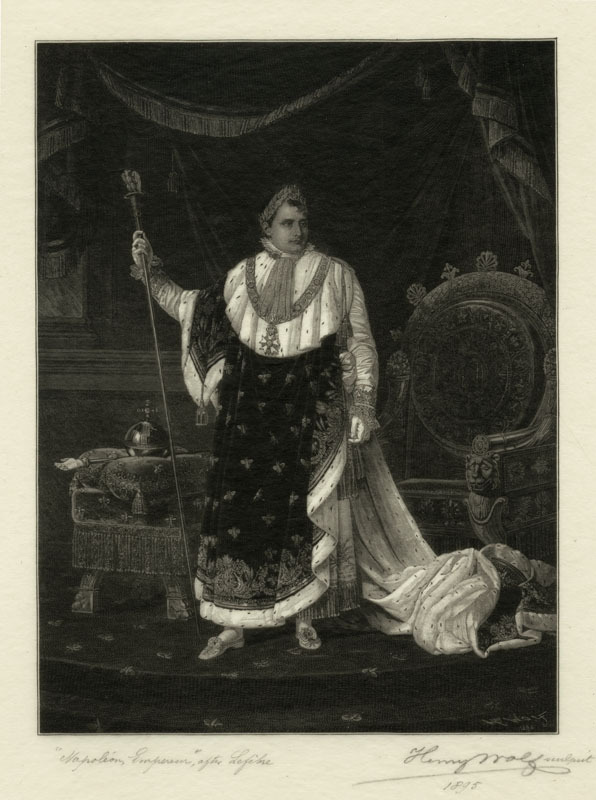
19th, 20th & 21st Century Fine Prints
707-546-7352 · fax 707-546-7924 · web: www.annexgalleries.com · email: artannex@aol.com
Napolean, Emperor, after Lefebvre by Henry Wolf



Napolean, Emperor, after Lefebvre
Henry Wolf
Napolean, Emperor, after Lefebvre
Henry Wolf
1852 - 1916 (biography)Henry Wolf won the Grand Prize for printmaking at the 1915 Panama Pacific International Exposition in San Francisco. One of the last of the great reproductive wood engravers, he exhibited 144 wood engravings at the PPIE, including "Napolean, Emperor." This is the actual impression exhibited.
Among the prints shown at the PPIE was this coronation portrait of Napolean done after the 1807 painting by Robert Lefebvre (1755-1830 ). This minute rendition retains every detail, and is exemplary of Wolf's keen understanding of the woodengraving technique as well as his personal artistic eye.
Where the original painting relies on rich hues to express the monarch's regal bearing, Wolf's iteration removes them entirely and instead conveys equal grandeur solely through tonality. From the rich velvety shadows to the exceedlingly delicate, bright wings of the imperial bee patterned on his coronation vestments and the carpet, Wolf misses nothing. The result is softer and pleasingly somber.
Wolf distills the elements of the painting that do not rely on color: filtered light, soft shadows, and deft, intentional textures. While the practice of copying paintings in the print medium was common at the time, Wolf's skill set him apart from many of his peers in that his renditions could stand alone.
This impression was exhibited in the 1915 Panama Pacific International Exposition, number 7516, where Wolf won the Grand Prize for Printmaking.
Henry Wolf, born in Eckwersheim, Alsace, France in 1852, was the premier wood engraver working in America from the late 1800's through his death in 1916. He studied with J. Levy in Strasbourg, and came to New York in 1871, after exhibiting throughout Europe, Paris in particular.
He primarily copied the "greats" for publication in the three most popular literary magazines of the time, Century Magazine, Harper's Monthly and Scribner's Magazine. The American artists he presented for public consumption included John Singer Sargent, Gilbert Stuart and Frank Weston Benson, the Europeans included Jan Vermeer, Edouard Manet and Jean Leon Gerome.
In the book The Life & Work of Henry Wolf by Ralph Clifton Smith, there is a quote from a letter received by Wolf in 1905 from W. Lewis Fraser, for many years connected with the art department of the Century Magazine, referring to Gerome, "'Many thanks for your letter. Gerome's expression as he looked at the proofs of your engravings of his paintings was 'they are beautiful, Mr. Wolf knew better than my brushes what I wanted to do.'" Wolf worked until his unexpected death in 1916, at the age of 64.

